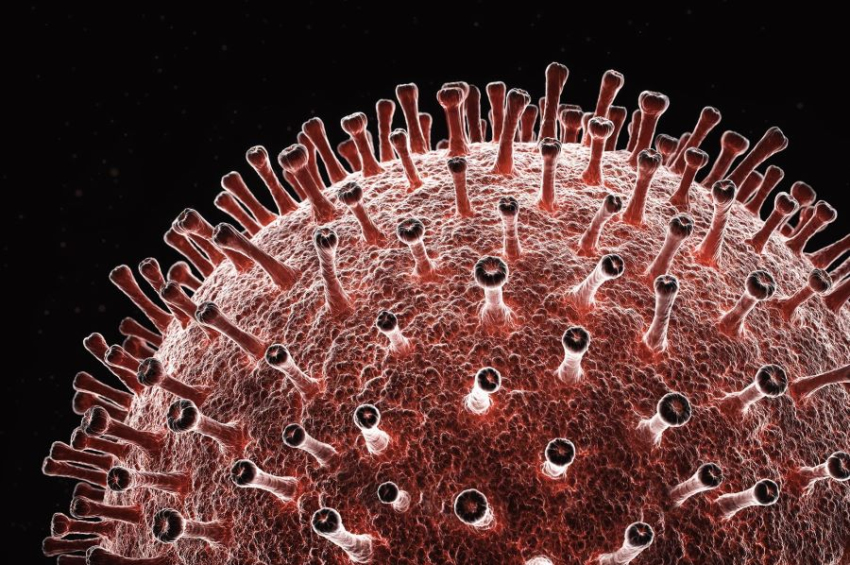WHO: Prepare for Disease X, deadlier than COVID-19
On 17 January 2024, participants in a panel organized within this year’s World Economic Forum in Davos, Switzerland, were briefed about measures to be taken as part of preparations for “Disease X.”
According to representatives of the World Health Organization (WHO) who brought the subject into attention, “Disease X can be 20 times deadlier that the coronavirus pandemic,” which has killed almost 7 million people worldwide.
As the news about “Disease X” spread, public reactions have been expectedly negative, filled with disappointment, anger, and even panic. It plays especially well for populists, conspirationists, anti-globalists, and anti-vaxxers, and they all might have a point. For more than two years (April 2020 – May 2023), people suffered from isolation, shutdowns, financial instability, job losses, and grief about the deceased.
Another – more dangerous – disease of COVID kind is likely to cause mass social unrest and open riots.
Luckily, no “Disease X” exists in reality. At least not yet. Or, perhaps COVID-19 was the one, according to some opinions. This conventional term is used to identify an unspecified infectious sickness that can spread out globally. In fact,
WHO officials made up the term in 2018 in order to work out blueprints for public policy and treatment.
Three years earlier, the organization considered prioritizing the top five to ten emerging pathogens likely to cause severe outbreaks in the near future, and for which few or no medical countermeasures existed. The initial list of diseases needing urgent attention comprised Crimean Congo haemorrhagic fever, Ebola virus disease and Marburg, Lassa fever, MERS and SARS coronaviruses, Nipah and Rift Valley fever.

WHO Director-General Tedros Adhanom Ghebreyesus, from Ethiopia, at the 2024 World Economic Forum in Davos. Credit: Flickr
When SARS-CoV-2 broke out, some experts in the health sciences community proposed to think of COVID-19 as “the first Disease X.” If new epidemic strikes, it will probably be caused by a virus from the same RNA family (flaviviruses, retroviruses, orthomyxoviruses), which will migrate the same way (from animals to people and people to people), according to research published in the National Medical Library in March 2023.
Or, it could be bacteria resistant to antibiotics and aging treatment schemes.
So, what are the friendly circumstances – both direct and indirect – of proliferation of Disease X?
1. Climate change and destruction of wildlife habitats. This has driven pathogens to alternative habitats, forcing them to adapt to new conditions in order to survive. They frequently mutate as a result.
2. The growing human population, which live and work in large groups. This makes easier for pathogens to find new hosts and “learn” the characteristics of a large number of organisms.
3. The weakening immunity of the public as a result of air and soil pollution, shortage of quality drinking water, poor access to preventive medical services (especially in developing countries).
4. Decreasing trust in medical expertise and in science in general, mainly as a result of underfunding and corruption in the education system. Some people therefore seek answers from alternative sources, rely on social media opinions, and defy governmental directives.
5. Political partisanship in health matters and slow bureaucratic response during emergencies. In many countries, the leaderships made decisions before taking advice from health experts – particularly epidemiologists or infection specialists – or got stuck in fighting over vaccine preferences.
6. Greed of the pharma industry, which puts profits first. Drug-making corporations continue charging exaggerate prices for vaccines and even ordinary drugs.
7. Dubious medical experiments with pathogens and poor security of labs. While the authorities would not admit this, the escape of SARS-CoV-2 from the Wuhan facility is a credible explanation how the pandemic started. After all, Chinese officials admitted in June 2023 that the virus “might have spread to due lab leakage.”
Addressing these challenges is a difficult mission, though some measures only depend on the good will of the ruling elites and could truly help. For example, by elaborating better protocols and response strategies for as many as possible situations, and their international adoption. Or by increasing the funding in the public health sector and for disease research. Or by enhancing epidemiological transparency and encouraging exchanges of information on infections between the scientific communities in various countries, including rivals or enemies.
More to read:
China admits COVID-19 virus could have spread due to lab leakage
The EcoHealth Alliance, a New York-based global environmental and health nonprofit dedicated to protecting wildlife and public health from diseases, reminds that there are 1.67 million unknown viruses on our planet.
It estimates that anywhere between 631,000 and 827,000 of those have the ability to infect people. Scientists currently know of only 263 viruses that can infect people, which means that the world knows almost nothing about 99.96% of potential pandemic threats. There are six species of human coronaviruses alone, with multiple strains and variants.
WHO officials predict that the next Disease X will most likely break out “in a low-income country of Africa or Asia.” This is likely, but not necessarily. Why Africa and Asia but not Latin America or Russia? Which are the criteria for making that choice?
More to read:
New research explains how coronaviruses jump between species
On the other hand, it isn’t clear why Disease X should be “20 times deadlier” than COVID-19, since no evidence exists in this regard. How could one assess the level of threat without anything happening yet? WHO director-general Tedros Adhanom Ghebreyesus, with all due respect, has not bothered to share data to prove this number is accurate.
Just to be clear: the nature of the threat is such that we can’t dismiss it. However, humanity has emerged stronger and (hopefully) better prepared from the latest pandemic. Perhaps it is wise to stay on alert about the unknown, talking to health experts and improving our defenses meanwhile, but it’s not the case to panic or riot over something that we can contain. Can’t we?
***
NewsCafe is a small, independent outlet that cares about big issues. Our sources of income amount to ads and donations from readers. Would you buy us a coffee? PayPal: office[at]rudeana.com.







